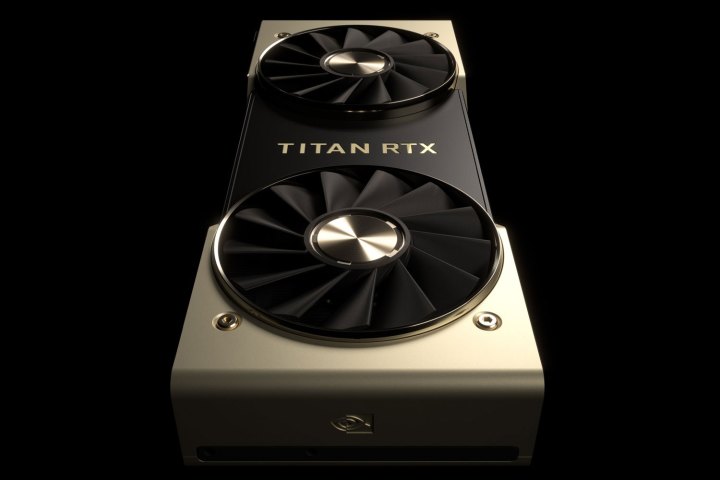
It turns out Nvidia’s RTX 2080 Ti wasn’t a new breed of consumer-facing Titan; it was a Ti. And now, just weeks after the original lineup was unveiled, the real Titan RTX is here, and it’s a real monster. Although aimed more at enterprises than gamers, the Titan RTX is effectively just a bigger, badder 2080 Ti, with the same (but fully unlocked) Turing GPU at its core. It comes with a full complement of CUDA cores, more Tensor cores, a higher boost clock, and more than double the memory of its 2080 Ti counterpart.
As powerful as the 2080 Ti of Nvidia’s new Turing generation of RTX graphics cards is, the whole launch was a little underwhelming. Only the Ti offered any real gains in intergenerational performance, the cards were very expensive, and few games are available even now that support the new ray tracing and DLSS features. The Titan RTX isn’t going to change that, with a monstrous $2,500 price tag of its own, but its performance should be eye-watering all the same.
The Titan RTX has a gully unlocked TU102 graphics core with a total of 4,608 CUDA cores. That’s over 250 more than the 2080 Ti, though not quite as many as the Titan V’s 5,120. The Titan RTX also comes with 576 Tensor cores for DLSS and A.I. tasks, and its clock speeds are 1,350MHz at base, and 1,770MHz when boosted. Its memory is the same 14Gbps GDDR6 found in the 2080 Ti, but where that card has just 11GB to play with, the Titan RTX has a massive 24GBs, as per Anandtech. Nvidia also expanded its level-two cache from 5.5MB to 6MB.
Those hardware upgrades improve performance in single and double precision tasks by between 10 and 15 percent, but in tasks where the Tensor cores are brought to bear, the Titan RTX can be more than twice as fast as the 2080 Ti.
All of that does come at a cost though. TDP is 20w higher at 280w and the price tag of $2,500 makes it more than twice as expensive as the 2080 Ti. Not quite as expensive as the Titan V, mind you, nor even close to the $10,000 price tag on the Tesla V100 when it was announced, but still out of reach of just about any gamer all the same.
Although there are a few high-net-worth gamers who will kit their systems out with a couple of these cards and overclockers will leverage them to take the top spots on the 3Dmark leaderboards, these aren’t going to find much use among gamers. The fact that Tensor core performance has improved so dramatically shows where these cards are targeted: A.I. and rendering — as Titan GPUs typically are.




